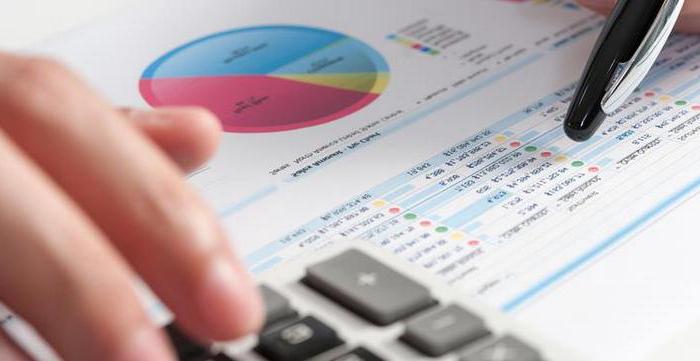An intangible asset is an object that has a certain price and generates income (creating the conditions for its receipt) that does not have physical content. This interpretation is considered the most acceptable, since it accurately reveals the essence of intangible assets. The concept, types and valuation of intangible assets Regulated by PBU 14/2000. Let's consider in more detail what are intangible assets. 
GK
The Civil Code previously included article 138, which disclosed concept and types of intangible assets. According to the norm, intangible assets were considered as monetary investments in objects that did not have material expression, used for a long time in economic activity, generating company income or providing conditions for the normal operation of the company and profit. Article 318 referred to some types of intangible assets. The rights to:
- Trademark.
- Objects of intellectual, industrial property.
- Inventions
- Natural resources.
- Industrial designs.
- Know-how.
- Literary works, etc.
From Jan 1 In 2001, PBU 14/2000 was introduced. This Regulation provides for a different approach to classifying objects as intangible assets. In PBU new types of valuations and depreciation of intangible assets.
IA criteria
Everything types of intangible assets have common features. To assign objects to the intangible assets, it is necessary that:
- There was no material structure.
- There was a possibility of difference (identification) of intangible assets from other objects and property forms.
- Assets were used in output, production of works, provision of services.
- Objects were able to bring economic benefits.
- Assets have been used for an extended period. It should be more than 1 year.
- Assets were acquired for personal use, not subsequent resale.
- There were documents duly executed and confirming the exclusive rights of the owner. They may be certificates, patents, etc.

The objects
From Jan 1 2001 established the following main types of intangible assets:
- Exclusive rights to products of intellectual labor. These include utility models, topologies of integrated circuits (integrated circuits), inventions, industrial designs, computer programs and databases, a trademark, names of places of origin of products, and a service mark.
- Organizational expenses. These costs are associated with the creation of the company. They are recognized as participants' contributions to capital, in accordance with the constituent securities.
- Business reputation. In accordance with paragraph 27 of PBU 14/2000, it is presented as the difference between the price of the company (property complex) and the total liabilities and assets on the balance sheet.
The most basic form of intangible assets is intellectual property rights.
Exceptions
Intangible assets from Jan 1 2001 does not recognize:
- Rights arising from a copyright or other contract for a work of literature, art, science and objects of related law. Their exclusion from the composition of intangible assets is caused by their inalienability. These rights cannot be transferred to other persons.
- Housing objects to be transferred to the account. 01 with depreciation on the off-balance sheet account 010
- The right to know-how. Technologies and other similar objects are not executed by the relevant documentation confirming the state registration of rights to the product of intellectual labor.
Everything types of intangible assets of the organization get the inventory number.If the period of validity of intangible assets is not specified, then the useful life is 20 years, but not more than the duration of the company. In accounting practice, the followingintangible assets depreciation:
- Linear method.
- The accrual is proportional to the volume of output.
- Reduced Balance Method.

NMA characteristic
In the civil turnover can participate not only objects with a tangible, in-kind form, but also property rights, as well as products of intellectual labor. The designation of objects that do not have a tangible form is carried out using the concept of intangible assets. It should be noted that the business and intellectual qualities of company employees, the ability to carry out professional activities, and qualifications do not apply to intangible assets. They cannot be used separately from the media.
Types of valuation of intangible assets
Intangible assets are reflected in the accounting at the initial price. It is defined as the value of the actual expenses of the company for the acquisition (minus recoverable VAT), creation, production, bringing to a state of suitability for subsequent use to achieve the planned goals. Types of valuation of intangible assets classified by type of transactions. Actual expenses include the amounts paid for:
- Providing consulting and information services.
- Registration fees.
- Patent and customs duties.
- Remuneration paid to intermediaries.
- Non-refundable taxes.
- Other costs.
- Under the assignment agreement (assignment of rights).
The price of intangible assets, expressed in foreign currency, must be converted into rubles at the Central Bank rate at the acquisition date. The initial price may be set by the parties by agreement. Types of Intangible Assets, contributed to the charter capital by the founders, are reflected at the initial price established by agreement of the parties. In some cases, companies receive intangible assets free of charge. In these situations, received types of intangible assets are reflected at the price determined by an expert. 
Accounting
Today there are no officially approved recommendations for registering the intangible assets movement. In this regard, companies need to independently develop the required forms of accounting. At the same time, normative documents fix the rules by which certain types of intangible assets are accepted. When acquiring intangible assets, in particular, an act must be drawn up. It can be compiled following the example of a document on the acceptance / transfer of the operating system, taking f. OS-1. The act reflects information about:
- The price of intangible assets.
- Their validity period.
- The developed depreciation rate and other details necessary for a uniform calculation of depreciation for produced / received objects.
Accounting account
The accountant is required to reflect everything inintangible asset value (original, modified, residual). In accordance with the current Chart of Accounts, a synthesis of information on the presence and turnover of intangible assets owned by the company on the basis of ownership is carried out on the account. 04. He is an active, balance sheet account. Debit balance reflects the price of everything types of intangible assets of an enterprise. Loan turnover shows its change. It, in turn, is determined by depreciation or write-off of an intangible asset (depending on the type and approved accounting policy). If the company has several types of intangible assets, subaccounts may be opened to the account:
- 04.1 - for intellectual property.
- 04.2 - for the rights to use natural resources.
- 04.3 - for deferred expenses.
- 04.5 - for other assets, etc.
Account analytics is conducted for individual types and objects of intangible assets.
Posting
Intangible assets accepted from the founders for contributions to capital are recorded as:
Db sc 08 cd 75.
After putting the intangible assets into operation, the following is wired:
Db sc 04 cd 08. 
Objects received from other persons for a fee are accounted for in DB sc. 08 in correspondence with sc. 60. After that, they are transferred to the account. 04: db 04 cd 08. To account for intangible assets, subaccount 5 is opened for account 08. The initial amount of assets received by the company free of charge is determined in accordance with the market price existing at the date of adoption. The capitalization of these intangible assets, as well as objects received as subsidies, is carried out by recording:
Db sc 04 cd 91.
The company can reflect gratuitous income on account 98, and then, in the course of depreciation, write off profits in the account 91.
VAT
It is paid upon acquisition of intangible assets. VAT is reflected by posting:
Db sc 19 cd 76 (60).
After payment and inclusion in the account, the tax is deducted from Cd. 19 in dec. 68 (subch. "Calculations for VAT").
Business reputation
It can be negative or positive. In the latter case, this is a price premium paid by the acquirer in anticipation of future income. A positive reputation is taken into account as an independent inventory object of intangible assets according to DB sc. 04 and cd 76. Depreciation is carried out for 20 years through a uniform reduction in the initial price. Negative reputation - discount provided to the buyer. It is recorded as income for future periods. To do this, wiring:
Db sc 76 cd 98.
A negative reputation is evenly attributed to the financial result as operating income. The record is as follows:
Db sc 98 cd 91. 
Depreciation charges
For all types of intangible assets, depreciation is calculated monthly. In this case, the norms determined taking into account the initial price and the life of the facilities are used. When the latter is unknown, it is allowed to take it equal to 20 years. However, the duration of this period should not be longer than the life of the company. Depreciation is taken into account 05. The exception is amounts directly transferred to Cd. 04 in correspondence with expense accounts. 05 account is a balance sheet, passive with a credit balance. It is used to summarize information on accumulated depreciation for intangible assets owned by the company.
Features of the reflection of amounts
By db count 05 take into account the write-off of accrued depreciation, and on the loan - accruals. Companies have the right to reflect amounts in two ways:
- With their accumulation in the account. 05.
- Direct debit without applying 05 account.
In the first case, depreciation is included in the debit of accounting items for production costs (distribution costs) and Cd cf. 05. When using the second option, the same accounts are debited, and 04 accounts are credited. In practice, it is advisable to combine these methods, fixing them in the accounting policy.
Accrual methods
The linear method assumes that the annual depreciation amount is equal to the initial price of intangible assets multiplied by the established rate. It is calculated in accordance with the useful life. When applying the method of reduced balance, the annual amount is determined in accordance with the residual value of assets at the beginning of the year and norms. The method of writing off the price in proportion to the volume of work / production involves accruing based on the natural indicator in the reporting period, the relationship between the initial st-st and the estimated amount of goods (work) for the entire useful life. No accrual is made for fully depreciated assets. Such objects reflect a conventional indicator with reference to its financial result. The method for determining depreciation of intangible assets must be checked annually for the need for clarification. Assets are deducted from the first day of the month following the period when the asset is taken into account until the price is fully paid off or debited from the balance sheet. The company should consolidate the selected depreciation method in its financial policy. 
Useful life
It is the period, expressed in months, during which the company expects to use the asset to generate income. Intangible assets for which it is not possible to establish it reliably are considered objects with an indefinite life. No depreciation is charged on them. The useful life is determined in accordance with:
- The period of the company's rights to the product of intellectual labor or a means of individualization and the duration of control over the object.
- The estimated period of use of the asset during which the firm expects to make a profit.
Corrections
If depreciation for some reason was not accrued, in case of errors in the records, the adjustment is carried out in the period in which they are found. In this case, the postings are made:
Db sc 91, subch. 91.2 cd 05.
The amounts of corrections allocated to 91 accounts are transferred to the other expenses of the company. They also include depreciation amounts on intangible assets provided by the copyright holder (licensor) for use.
Investments in intangible assets
Any type of investment in intangible assets should be aimed at increasing the scientific and technical potential, strengthening the competitiveness of the company. Investments in intangible assets contribute to improving the quality of products or services. Additional financial support is aimed at the introduction of innovative technologies, the development of new products, and the improvement of manufacturability. Investments can be used to improve the business reputation of the company. The higher it is, the greater the market value of the company. Accordingly, she becomes a more attractive partner. This will allow us to conclude profitable deals in the future and attract more customers. Currently, investments in intangible assets are widespread. It can be compared with patronage, with the only difference being that all participants receive economic benefits. Of course, such investments are accompanied by certain risks. However, it is minimal, since investment is carried out after checking the product during the year.
Conclusion
Recently, to obtain economic profit, enterprises are increasingly using intangible assets. This trend is consistent with the current situation in the market. Products of intellectual labor today bring tremendous income to companies. Firms that work in the market and closely monitor the situation know which objects are better to invest in at what time. Many enterprises attach great importance to business reputation, since this intangible asset provides competitiveness and investment attractiveness. In carrying out activities, companies need to take into account all the subtleties of accounting for intangible assets. Of particular importance is the correct accrual and reflection of depreciation amounts. We should also not forget that the chosen calculation method should be fixed in the financial policy of the company.